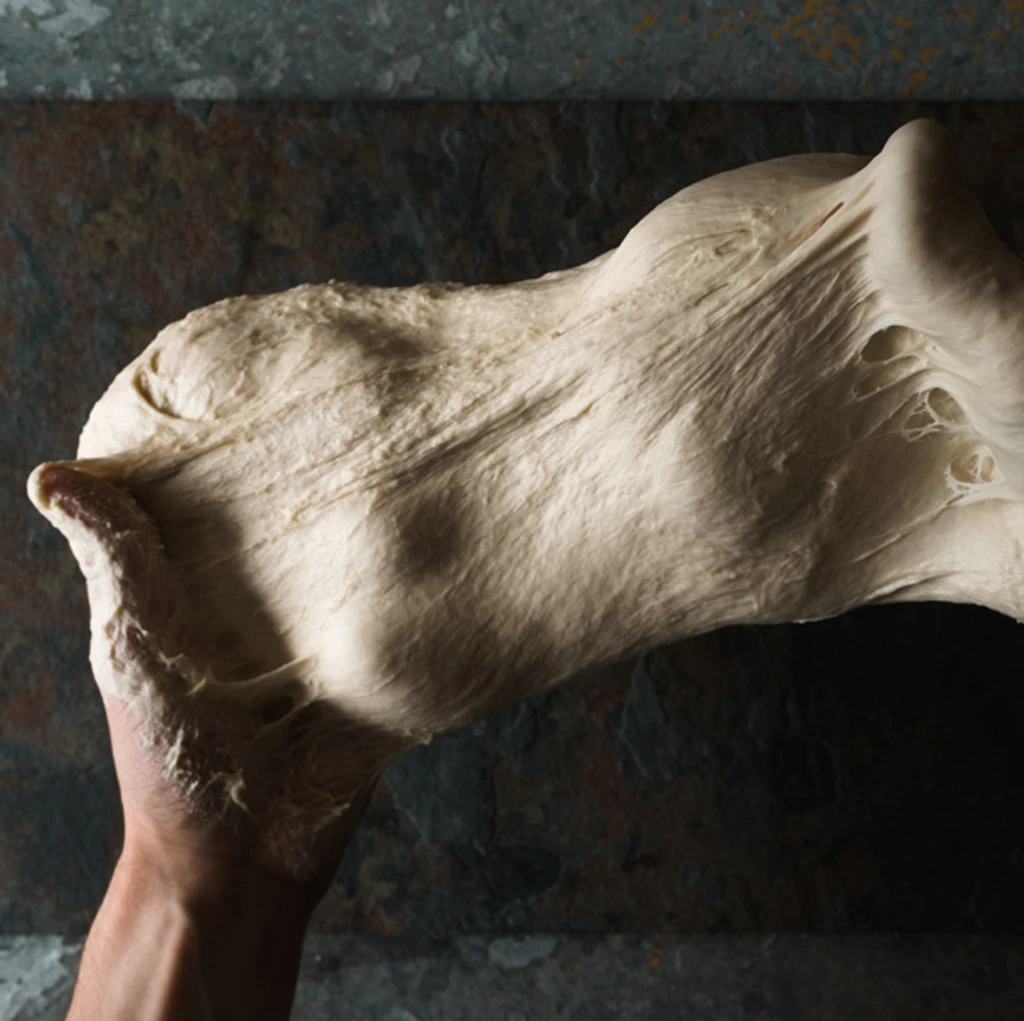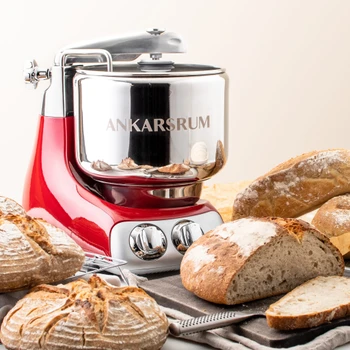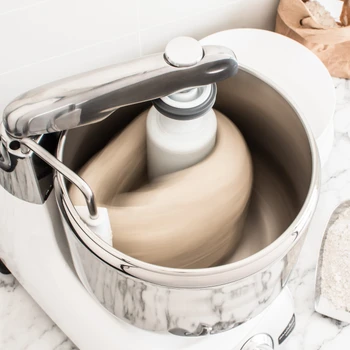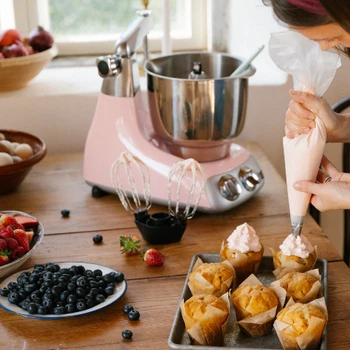Gluten is a protein that is present in wheat, rye and barley. This means that gluten is something that is already present when you start preparing your dough. (Provided you are not baking gluten-free, that is. (Read more about this here.))
When baking bread gluten makes the dough easier to work and produces a better rise. The gluten in wheat produces the best baking qualities. That is why at least half of the quantity of flour used in a dough should be wheat flour, preferably strong flour or similar, to ensure that the dough rises well and the resulting bread is porous and airy. (Read more about different flour options here.)
When baking you want to be sure that the gluten present in the dough forms gluten strands. These strands serve as walls, keeping the air bubbles (the carbon dioxide) that form during proving inside the dough, which makes the bread airy. Gluten strands are formed by working and kneading the dough. When the dough is kneaded, links form in the protein chains/the gluten. A large number of weaker links form quite quickly. If you stop at this point, with weak links, you get a bread that cannot take a long rise. This is not what you want, as a longer proving time also helps to form strong gluten strands. By continuing to knead the dough, these weak links are broken, and new stronger links form. It is this process that makes the dough feel firmer when it has been kneaded for longer. Achieving this result is a whole lot easier when you use a kitchen assistant in your baking.
One of the strengths of the Ankarsrum Assistent is its unique way of kneading the dough and creating strong links. The dough is not just spinning around; having the bowl rotate while the dough knife and dough roller or dough hook work the dough ensures that the dough is properly kneaded. The Ankarsrum Assistent is primarily associated with working dough with a dough roller, which is a similar process to traditional kneading by hand, although the machine is far more efficient and can do the job easily. You should try to avoid adding more flour once you have started the timer and the intensive kneading has started. Adding flour at different stages means it is kneaded for different lengths of time, which produces irregular links.
One method you can use to check whether the dough is fully kneaded is to pinch off a piece of the dough and carefully pull it apart. If the dough is ready, it is pliable and holds together, forming a thin “gluten window”. The dough should feel elastic and a little “tough”. If it is not yet ready, the dough will break straight away and feels far less pliable. More like the feel of clay. If this happens, roll the piece of dough back together and knead it a bit more by hand. If it then feels more pliable, you know that it needs to be kneaded for longer.
If the dough was already elastic and passed the test, but you continue to knead it, there is a risk of you breaking the strong links that have formed. The dough then loses its resilience and can “spread”. This is a sure sign that a dough has been overworked.





